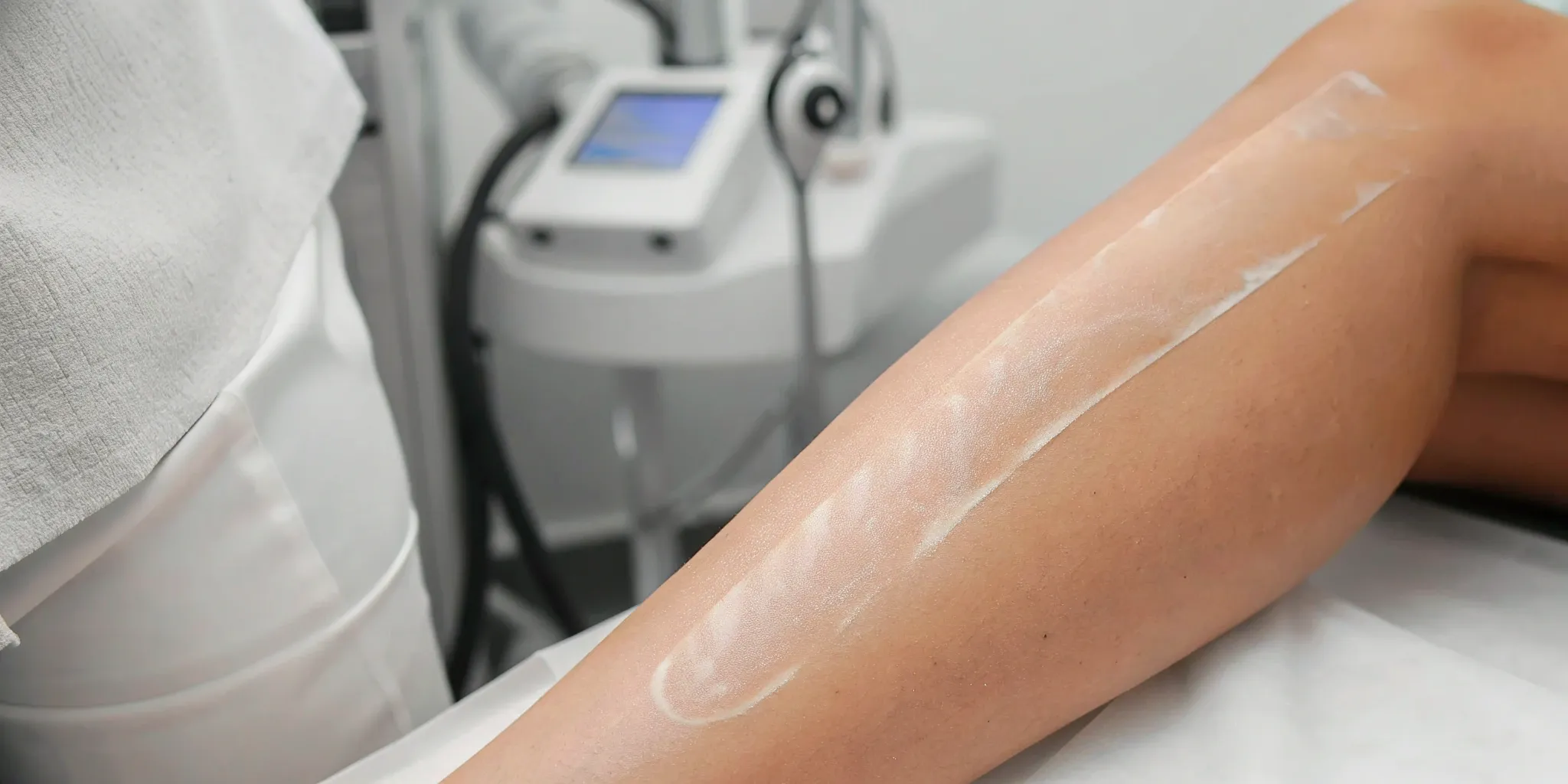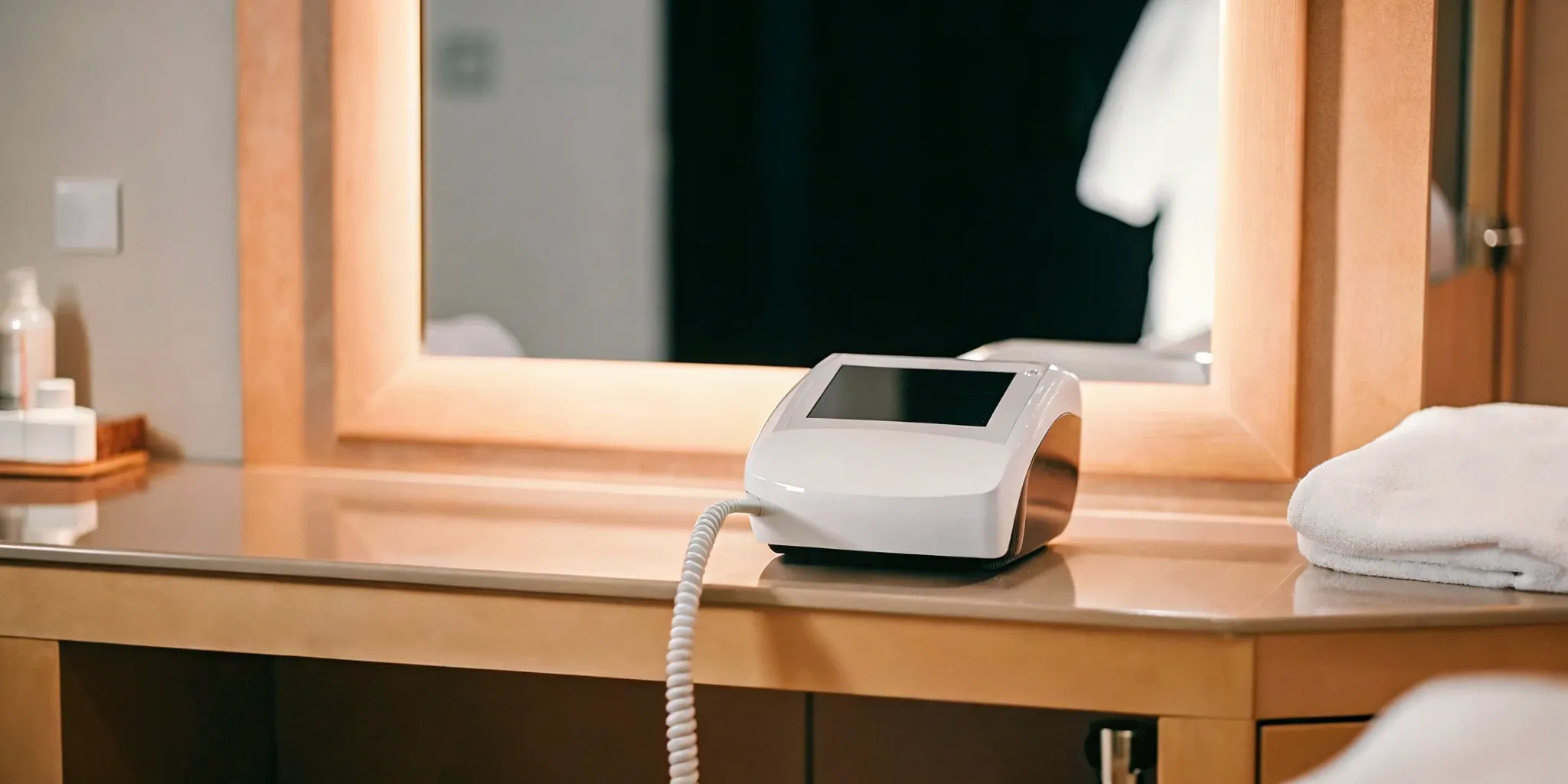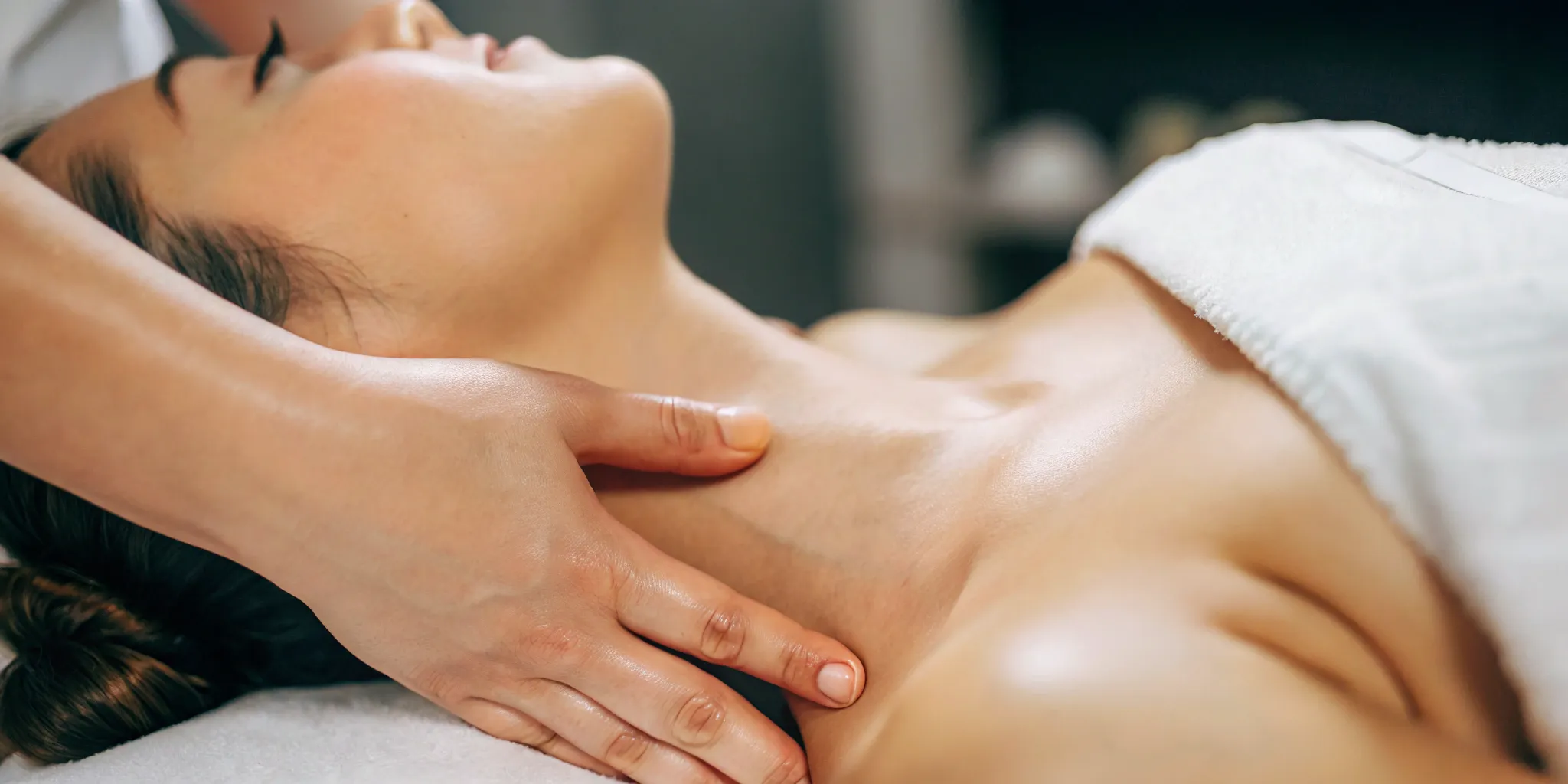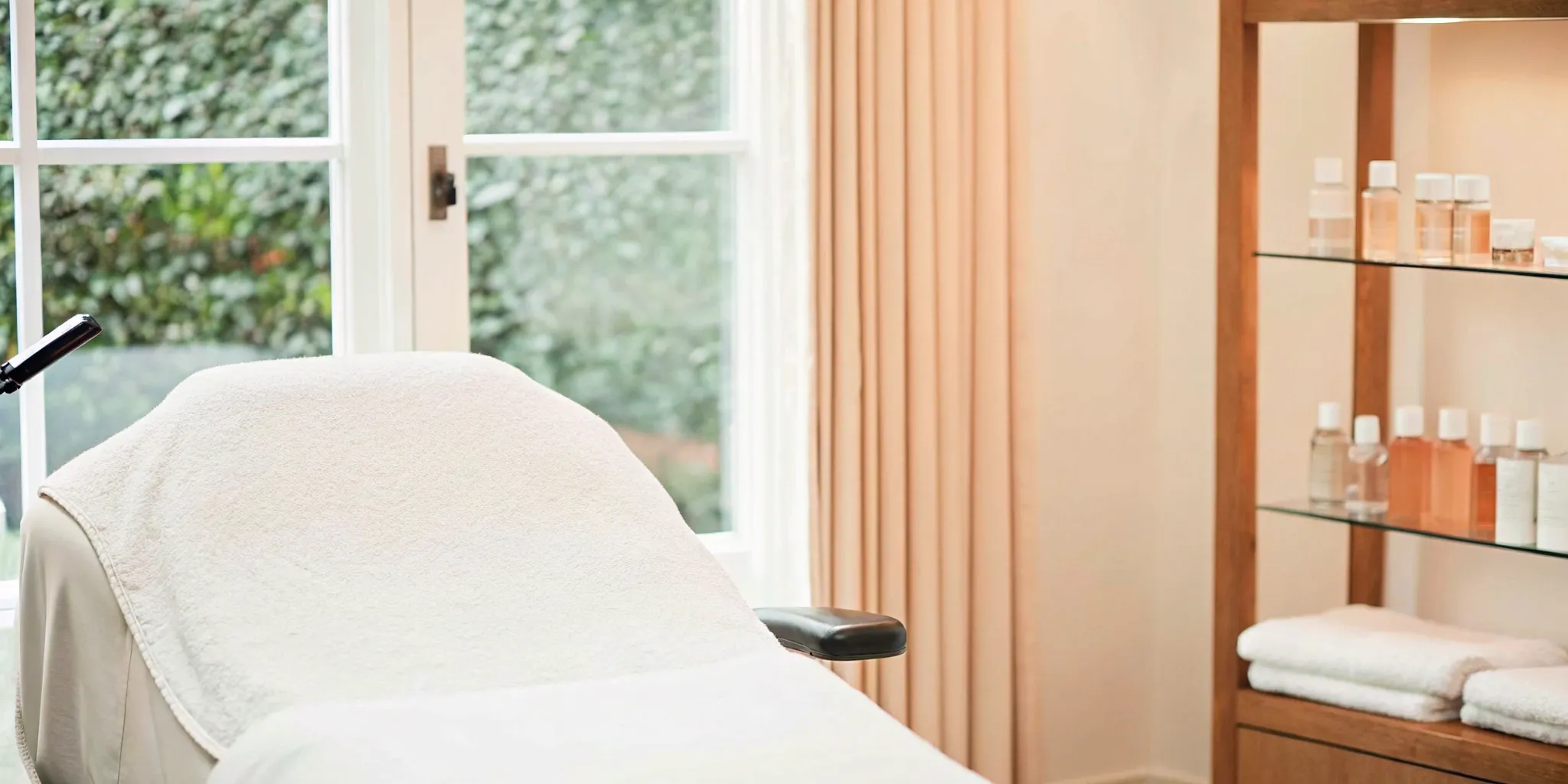The tattoo industry is changing, and technology is leading the way. From advanced cordless machines that give artists more freedom to new ink formulas that go in smoother and stay brighter, these innovations are reshaping the entire process. This new tech is helping artists find the perfect balance between speed and quality. It means getting the fastest tattoo no longer has to come with a risk of poor workmanship. An artist armed with the right tools can work more efficiently, creating crisp lines and packing color flawlessly in less time. Let’s explore how these advancements are making tattoo sessions better for both the artist and you, the client.
Key Takeaways
- Complexity Dictates the Clock: Don’t judge a tattoo’s time by its size alone. A small, highly detailed piece with intricate shading and color can take much longer than a larger, simpler design.
- Prioritize Quality Over Speed: An experienced artist works efficiently because of skill and preparation, not by rushing. Look for portfolios with crisp lines and smooth shading, as this indicates a professional who invests the necessary time to create a lasting piece of art.
- Your Preparation is Part of the Process: A great tattoo is a collaboration. Ensure a better outcome by thoroughly researching your artist and arriving at your appointment well-rested, hydrated, and having eaten a meal to help your body handle the session.
What Affects How Long Your Tattoo Takes?
If you’re planning your next tattoo, one of the first questions you probably have is, “How long will this take?” The answer isn’t as simple as looking at a picture and guessing. Several key factors influence how much time you’ll spend in the artist’s chair, and understanding them helps you set realistic expectations for your appointment. It’s not just about scheduling your day; it’s about appreciating the craft that goes into a piece of art you’ll wear for life.
The time it takes to get a tattoo depends on a combination of the artist’s expertise, the design’s specifics, and the equipment they use. A simple, small design might be done in under an hour, while a full sleeve could require multiple day-long sessions spanning weeks or even months. Knowing what goes into the timeline can also help you evaluate the quality of your existing tattoos. If a past piece was rushed and didn’t turn out right, it can be frustrating to live with. The good news is you have options, and a service like laser tattoo removal can give you a clean slate for a new piece you truly love. For now, let’s break down what determines the duration of your tattoo session so you can go into your next appointment feeling prepared and confident.
The Artist’s Skill and Experience
An artist’s experience level is one of the biggest factors in how long a tattoo takes. A seasoned professional who has been tattooing for years often works more efficiently than someone new to the industry. Their speed comes from confidence and a deep understanding of their craft—they know exactly how to handle their machine, how deep to set the needles, and how different skin types react to ink. This doesn’t mean a faster artist is always better, or that a slower one is bad. Some of the most incredible tattoos require patience and meticulous attention to detail that simply can’t be rushed. However, an experienced artist can often execute clean lines and smooth shading with a steady, practiced hand, which naturally makes the process quicker without sacrificing quality.
Your Tattoo’s Size and Complexity
It seems obvious that a larger tattoo will take more time, but complexity plays an equally important role. A small, palm-sized tattoo with simple black linework might take less than an hour. But a photorealistic portrait of the same size could take many hours due to the intricate shading and subtle details required to make it look lifelike. Elements like color blending, heavy saturation, geometric patterns, and fine-line details all add to the clock. Before your appointment, your artist will give you a time estimate based on both the size and the technical difficulty of your chosen design. This is why a custom, detailed piece will always be a bigger time investment than a simple flash design.
The Tools and Techniques Used
The equipment an artist chooses also impacts their speed. Different tattoo machines, like rotary or coil machines, operate differently and can affect how quickly an artist works. The needle configuration is another key element. An artist might use a large group of needles, called a mag (or magnum), to fill in large areas of color or shading more quickly. For fine lines, they’ll switch to a much smaller needle grouping. An artist’s individual technique—how they stretch the skin, their hand speed, and their workflow for setting up colors—also contributes to the overall time. An efficient artist has a streamlined process that minimizes downtime, allowing them to focus completely on creating a beautiful, lasting piece of art on your skin.
How Long Should You Expect to Be in the Chair?
One of the first questions on everyone’s mind is, “How long is this going to take?” It’s a totally fair question—you’re clearing your schedule, preparing mentally, and maybe even feeling a little nervous. The truth is, there’s no single answer, as the time you spend in the chair depends entirely on your chosen design. Factors like size, placement, color, and the level of detail all play a huge role in the final timeline. A tiny heart on your wrist will be much quicker than a full-color portrait on your thigh.
It’s a permanent decision, and while you’re excited about the new art, it’s also wise to know that options like laser tattoo removal exist if you change your mind years from now. But for now, let’s focus on the time you’ll spend getting it. Understanding the general timeframes for different types of tattoos can help you plan your appointment, manage your expectations, and ensure you’re mentally and physically prepared for the session ahead. Let’s break down what you can generally expect for small, medium, and large pieces.
For Small, Simple Tattoos
If you’re starting with something small and simple, you’re in luck—your time in the chair will be pretty brief. Think of a palm-sized design in black ink with clean lines and minimal shading. These types of tattoos can often be completed in under an hour. It’s a great way to get your first piece or add a subtle design without dedicating an entire day to the process. The focus here is on simplicity, so intricate shading or multiple colors will push it into the next category. For a quick and straightforward experience, a small, simple tattoo is the perfect choice.
For Medium-Sized Tattoos
Ready for something with a bit more personality? A medium-sized tattoo introduces more complexity, which naturally requires more time. A palm-sized piece that includes detailed line work, shading, and multiple colors could take around two to three hours to complete. This is where the artist’s skill really starts to shine as they layer colors and create depth. You’ll need to be prepared to sit still for a bit longer, but the beautiful, detailed result is always worth the extra time and patience. This timeframe allows the artist to perfect every detail without rushing the process.
For Large, Complex Pieces
For those dreaming of a full sleeve or a statement back piece, get ready to become good friends with your tattoo artist. These large-scale projects are a serious commitment, both in time and cost. A full sleeve can take anywhere from 6 to 10 hours, while a massive back piece might require up to 30 hours of work. This is never done in one sitting. Instead, your artist will break it down into multiple sessions, allowing your skin to heal in between. It’s a marathon, not a sprint, requiring careful planning and dedication from both you and the artist to bring your vision to life.
How Skilled Artists Work Efficiently
When you see a tattoo artist working quickly, it’s easy to mistake their speed for rushing. But for a true professional, efficiency isn’t about cutting corners—it’s the result of years of practice, smart preparation, and a deep understanding of their craft. A skilled artist works with a steady, confident hand because they’ve honed their process to be as smooth as possible. This not only respects your time in the chair but also minimizes trauma to your skin, which can lead to better healing and a more vibrant final tattoo. Their efficiency is a sign of mastery, not impatience.
Their fluid movements come from a combination of thoughtful planning before your appointment and flawless execution during it. They’ve refined every step, from setting up their station to applying the ink, so that no movement is wasted. This deliberate approach is what separates a seasoned expert from a novice. It’s a rhythm they’ve developed over thousands of hours, allowing them to create beautiful art without unnecessary delays. Understanding what this efficiency looks like helps you appreciate the difference between a fast artist and a rushed one, ensuring you feel confident and comfortable throughout the entire process.
Smart Planning and Preparation
A huge part of an efficient tattoo session happens before you even sit down. Experienced artists invest significant time in preparation to ensure everything goes smoothly. This often involves creating a detailed color study or digital mockup of your design beforehand, which reduces decision-making time during the appointment. They’ll have the stencil perfectly sized and ready to apply, and their workstation will be meticulously organized with all the necessary inks, needles, and supplies within easy reach. This level of readiness means they can focus entirely on the art without breaking their flow, giving you their undivided attention. This planning phase is something you’re a part of during your initial consultation.
Expert Machine Handling
An artist’s tools are an extension of their hand, and a professional knows their equipment inside and out. They understand exactly which machine, needle grouping, and voltage setting is best for each part of the process, whether it’s pulling a clean, single line or packing in rich color. For example, they might use a larger needle configuration to saturate color more quickly and evenly. This expertise allows them to work with confidence and precision, making every pass of the needle count. By applying ink effectively the first time, they reduce the need to go over areas repeatedly, which saves time and is much gentler on your skin. This is also why some tattoos are harder to address with tattoo removal than others.
Flawless Ink Application
For a skilled artist, speed and quality are not mutually exclusive. Their efficiency comes from muscle memory and an intimate knowledge of how to work with skin. They know the right amount of pressure to apply and how to stretch the skin properly to create crisp lines and smooth, consistent shading in one go. This flawless technique is what allows them to work at a steady pace without sacrificing the integrity of the design. They aren’t rushing; they’re simply so proficient that their movements are economical and precise. This ensures the ink is packed correctly to last a lifetime, all while delivering the high-quality results you expect from a professional who offers a range of skin services.
Speed vs. Quality: Finding the Right Balance
It’s tempting to want your tattoo session to be over as quickly as possible, but when it comes to permanent body art, speed isn’t always your friend. The real goal is to find an artist who works efficiently without ever compromising on the quality of your finished piece. A great tattoo is an investment in yourself, and finding the right balance between a swift session and a stunning result is key. An experienced artist might naturally work faster than a beginner, but their speed comes from years of practice, not from cutting corners. They understand the flow of their work and how to handle their tools with expert precision. This section will help you understand why patience pays off and what to look for to ensure your tattoo is both beautiful and built to last. It’s about recognizing that true skill lies in efficiency, not just speed. A seasoned professional knows when to slow down for intricate details and when they can move more quickly through larger areas of shading, all while maintaining a consistent, high-quality result. Ultimately, you want an artist who respects the craft and your skin enough to give the piece the time it truly deserves.
Why Precision Can’t Be Rushed
Think of your tattoo as a custom piece of art. Intricate details, complex shading, and fine lines all require a steady hand and immense focus. While an experienced artist might be naturally faster than a novice, they also know when to slow down. A complex design, like a detailed portrait or an elaborate chest piece, simply needs more time for proper execution. Rushing through these critical steps can lead to mistakes that are permanently etched into your skin. While options like laser tattoo removal exist, it’s always better to give your artist the time they need to create a piece you’ll love forever, right from the start.
Getting Consistent Lines and Shading
A fast artist isn’t necessarily a bad artist, but the proof is in the final product. The hallmarks of a high-quality tattoo are crisp, consistent lines and smooth, even shading. When an artist rushes, lines can become shaky, and shading can look patchy or uneven. An experienced professional develops a rhythm that is both efficient and incredibly precise. They know how to move the needle steadily to create flawless linework and how to build up color without overworking the skin. When you review an artist’s portfolio, pay close attention to the technical skill. Are the lines clean? Is the shading seamless? This is where quality truly shines through.
Ensuring the Ink Is Packed to Last
A tattoo that looks amazing the day you get it but fades within a year isn’t a quality tattoo. A crucial part of the process is “packing” the ink, which means the artist deposits the pigment into the correct layer of your skin so it stays vibrant and bold for years to come. If an artist moves too quickly, they might not pack the ink deeply or evenly enough, leading to a washed-out look once it heals. Prioritizing quality over speed ensures your artist takes the time to properly saturate the skin. This focus on technique is what makes a tattoo last a lifetime, making that extra time in the chair completely worth it.
The Risks of a Rushed Tattoo
While no one wants to spend more time under the needle than necessary, there’s a big difference between an efficient artist and a rushed one. When an artist prioritizes speed over everything else, the results can be more than just disappointing—they can be damaging. A tattoo is a permanent piece of art on your body, and cutting corners during the process often leads to regret. It’s tempting to look for an artist who can get you in and out quickly, especially for a smaller piece. But the trade-off between speed and quality is very real.
From shaky lines and patchy shading to painful healing and a final design that misses the mark, the consequences of a hurried tattoo are significant. It’s a classic case of “you get what you pay for,” not just in money but in time and attention. An artist who respects their craft and your skin will take the necessary time to get it right. They understand that creating lasting art involves careful planning, precise application, and a respect for the canvas—your skin. If you ever feel like you’re on a conveyor belt or that your questions are being dismissed, it’s a major red flag. Remember, a few extra hours in the chair is a small price to pay for a lifetime of loving your ink.
Poor Quality and Obvious Mistakes
The most immediate risk of a rushed tattoo is a drop in quality. Intricate designs with fine lines, smooth gradients, and saturated color require patience and precision. When an artist rushes, those details are the first to suffer. You might end up with wobbly lines, inconsistent shading, or colors that look muddy and poorly blended. These aren’t just minor imperfections; they’re obvious mistakes that can ruin the entire look of your tattoo. Unfortunately, once the ink is in, it’s there for good. If you’re left with a piece you can’t stand to look at, your only options are a cover-up or professional laser tattoo removal to correct the errors.
Skin Trauma and Healing Problems
Getting a tattoo is, by nature, an invasive process. Your skin is being punctured thousands of times to deposit ink. A skilled artist knows how to do this with minimal trauma, but a rushed artist is often heavy-handed. They might push the needle too deep or work over the same area too aggressively, causing excessive damage to your skin. This not only makes the session more painful but can also lead to a difficult healing process. Rushed work can result in heavy scabbing, ink blowouts (where ink spreads under the skin), and even permanent scarring. Proper healing is essential for a crisp, vibrant tattoo, and that starts with an artist who treats your skin with care.
Less Time for Customization
A great tattoo is a collaboration between you and your artist. The process should involve careful stencil placement, discussions about final details, and the flexibility to make small adjustments before the needle starts. When an artist is rushing, this crucial collaborative step gets skipped. They might slap the stencil on without checking for perfect placement or ignore your last-minute thoughts on a specific detail. This lack of communication can leave you with a tattoo that doesn’t quite fit your body or match the vision you had in your head. You’re not just paying for the ink; you’re paying for the artist’s expertise and their ability to bring your idea to life, which is a process that simply can’t be hurried.
How to Find an Efficient, High-Quality Artist
Finding the right tattoo artist is a lot like dating—you’re looking for a perfect match who understands your vision and has the skills to bring it to life. The goal isn’t just to find the fastest artist, but one who is both efficient and incredibly talented. After all, this is a permanent piece of art on your body. While services like laser tattoo removal exist for tattoos that don’t turn out as planned, it’s always best to get it right the first time. Here’s how you can find an artist who delivers stunning work without wasting your time.
Review Their Portfolio and Experience
Before you even think about booking a consultation, spend some serious time looking through an artist’s portfolio. Their past work is the best indicator of their style, skill, and consistency. Choose an artist based on the quality of their work, not just their reputation for being fast. Look for clean lines, smooth shading, and vibrant, well-saturated color. An experienced artist has often developed a steady hand and a streamlined process that allows them to work efficiently without cutting corners. By reviewing portfolios, you can find a style and quality level that aligns with your vision and budget.
Prioritize Clear Communication
The best tattoos are born from collaboration. A great artist will listen to your ideas, offer their professional input, and make sure you’re both completely aligned before the needle ever touches your skin. Don’t be afraid to ask questions during your consultation. If an artist seems rushed, dismissive, or unwilling to discuss your design in detail, that’s a major red flag. Getting a tattoo is a long-term commitment, so you want to work with someone you trust. When you find an artist you click with, it’s often worth waiting for their availability to ensure you get the result you truly want.
Set Realistic Expectations
It’s important to understand that tattoo time depends on more than just size. A small, intricate piece with fine lines and detailed shading can take much longer than a larger, simpler design. Factors like placement, color, and the complexity of the style all play a significant role in how long you’ll be in the chair. Have an open conversation with your artist about the estimated time and cost. A professional will give you a realistic timeframe and explain the factors involved. This helps you mentally and financially prepare for the session and ensures the focus stays where it should be: on creating a high-quality, lasting piece of art.
How to Prepare for Your Tattoo Appointment
Getting a new tattoo is an exciting experience, and a little preparation goes a long way in making sure everything goes smoothly. When you walk into your appointment feeling ready, you help your artist do their best work, and you set yourself up for a more comfortable session and better healing. The goal is always to get a piece of art you’ll be proud to wear for a lifetime. Proper planning helps you avoid tattoo regret and the need for laser tattoo removal down the road.
Think of your tattoo journey in three simple phases: the prep work you do before you go, what to expect while you’re in the chair, and the essential aftercare that follows. Each step is just as important as the last for ensuring your new ink looks incredible from day one and for years to come. Let’s walk through what you need to know to make your next tattoo appointment a total success.
Before You Go: Pre-Tattoo Care
The work for a great tattoo starts before you even sit in the artist’s chair. First, always schedule an appointment with a reputable, professional artist. This gives them the dedicated time to focus on your design and ensures you’re in a safe, clean environment. Avoid the temptation of a cheap or at-home tattoo—your health and the quality of the art are worth the investment.
In the 24 hours leading up to your session, focus on getting your body ready. Eat a full, balanced meal before you go to keep your blood sugar stable, and make sure you’re well-hydrated. This simple step can prevent you from feeling faint or dizzy. It’s also wise to get a good night’s sleep and avoid alcohol, which can thin your blood and affect the healing process.
During Your Session: What to Expect
Patience is key when it comes to getting tattooed. The total time your appointment takes depends on much more than just the size of the piece. Your artist needs time for setup, creating and placing the stencil, and making any final adjustments to the design with you. All of this happens before the needle even touches your skin.
The complexity of your tattoo is the biggest factor. A small, highly detailed design with intricate shading or multiple colors can easily take longer than a larger, simpler piece with only linework. Trust your artist’s process and try not to rush them. Feel free to bring headphones to listen to music or a podcast, and for longer sessions, ask your artist if it’s okay to have a snack and water on hand to keep your energy up.
After Your Session: Essential Aftercare
Once your tattoo is finished, the artist’s job is done, but yours is just beginning. A tattoo is a long-term commitment, and proper aftercare is non-negotiable for a beautifully healed result. Your artist will give you specific instructions—follow them exactly. This typically involves gently washing the area with mild soap, applying a thin layer of recommended ointment, and keeping your new ink out of direct sunlight and submerged water (like pools or baths) for a few weeks.
Remember to factor the cost of aftercare products into your budget. Taking care of your tattoo is just as important as the initial investment. Great aftercare ensures the lines stay crisp, the colors remain vibrant, and your skin heals properly, leaving you with a stunning piece of art.
Tattoo Tech: What’s Changing in the Industry?
The world of tattooing is constantly evolving, and it’s not just about new artistic styles. The technology behind the art form is advancing quickly, changing how artists work and what’s possible for your skin. These shifts are making the process more efficient and the results more stunning than ever. For anyone getting new ink or even considering laser tattoo removal down the line, understanding these changes is key. From the tools artists use to the very ink they apply, technology is reshaping the industry and helping artists find that perfect sweet spot between speed and quality.
New Tattoo Machine Technology
One of the biggest game-changers for artists has been the development of new tattoo machines. Gone are the days when every artist was tied to a power supply by a cord. The introduction of powerful, cordless, pen-type machines has given artists incredible freedom of movement. These modern tools are lightweight and have long-lasting batteries, allowing for smoother, more fluid motions. This means your artist can work more comfortably for longer periods, translating to cleaner lines and more intricate details in your tattoo. This technology allows artists to handle a wide range of designs with greater precision and efficiency.
Advances in Tattoo Ink
It’s not just the machines that are getting an upgrade; the ink itself is becoming more advanced. Ink manufacturers are creating new formulas that offer more vibrant, longer-lasting colors. These improved inks are also designed to go into the skin more smoothly, which helps speed up the application process. When the ink is higher quality, an artist can pack color and create shading more effectively, reducing the time you spend in the chair. This focus on better materials ensures your tattoo not only looks incredible when it’s fresh but also holds its beauty for years to come.
How Artists Train for Efficiency
With new tools comes the need for new skills. Artists are continuously adapting their techniques to make the most of modern technology. This includes training with the latest machines to improve their speed and precision without sacrificing artistic quality. Some studios are even exploring automated tattooing devices that can assist with creating flawless, intricate patterns. This doesn’t replace the artist’s touch but rather complements it, allowing them to execute complex designs with unmatched accuracy. By embracing these innovations, artists can deliver high-quality, custom work more efficiently than ever before.
Related Articles
- Complete Color Tattoo Removal: An Expert Guide – Ultimate Image MedSpa
- Tattoo Removal: A Complete Guide to the Process – Ultimate Image MedSpa
- Fast Tattoo Removal: Safe & Effective Options – Ultimate Image MedSpa
- Tattoo Removal Before & After: Real Results & Expectations – Ultimate Image MedSpa
- Tattoo Removal Stages: Your Healing Process Explained – Ultimate Image MedSpa
Frequently Asked Questions
Is a faster tattoo artist always a better one? Not necessarily. While a seasoned artist often works more quickly due to years of practice and confidence, speed should never be the main measure of skill. The true goal is efficiency—a smooth process that results in flawless lines and shading without wasting time. A great artist knows when to slow down for intricate details. Always prioritize the quality you see in their portfolio over how fast they claim to work.
What if my tattoo is taking longer than the artist’s original estimate? Try not to worry, as this is quite common. An artist’s initial time quote is an educated guess. Factors like your skin’s sensitivity, how well it takes ink, or even small design adjustments can add time to the session. A true professional will focus on getting the tattoo perfect rather than just getting it done on time. A little extra patience is always worth it for a piece of art you’ll have for life.
How can I tell the difference between an efficient artist and a rushed one? It really comes down to the artist’s demeanor and focus. An efficient artist is calm, confident, and deliberate with their movements. They communicate clearly and make you feel comfortable. A rushed artist, on the other hand, might seem stressed, dismissive of your questions, or careless with stencil placement. If you feel like you’re just another appointment to get through, that’s a major red flag.
Does where I get the tattoo on my body change how long it takes? Absolutely. The location of your tattoo plays a huge role in the time required. Areas with thinner, more sensitive skin or bony spots like the ribs, feet, or spine are more challenging to work on. Your artist will need to be more careful and may need to work more slowly to ensure the lines are clean and the ink is packed correctly. A fleshy area like an arm or thigh is typically more straightforward.
I think my last tattoo was rushed and I don’t like it. What can I do? It’s incredibly frustrating to live with a tattoo that didn’t turn out right. The good news is you have options. You could try to cover it with a new, larger design, but that isn’t always possible. For a truly fresh start, you might consider laser tattoo removal. This process can fade the old ink enough for a better cover-up or remove it completely, giving you a clean slate to get a piece of art you truly love from an artist you trust.







